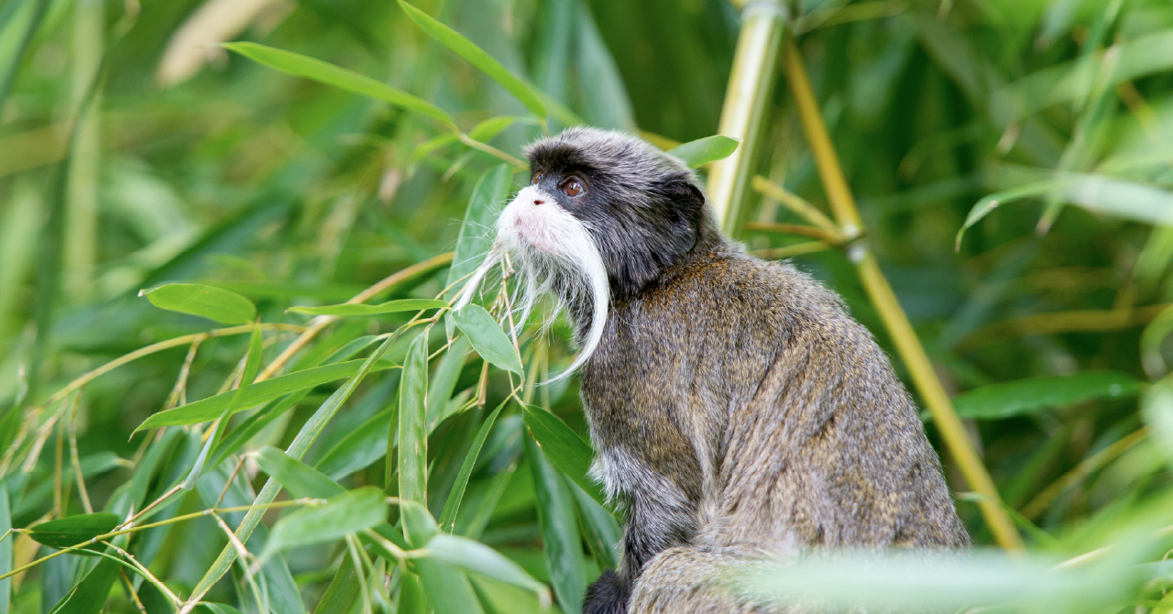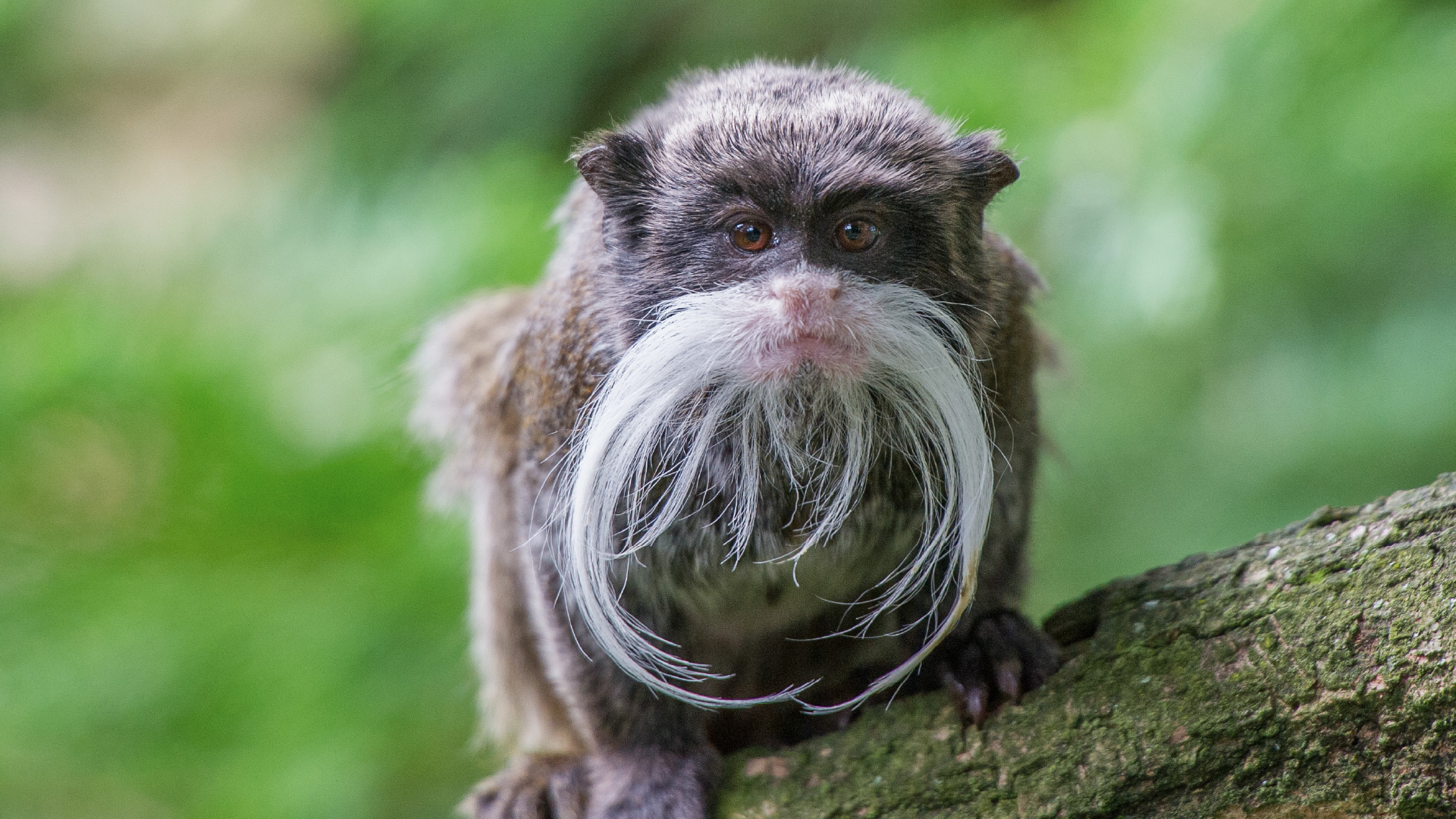Emperor tamarin
Saguinus imperator
Habitat
Primary and secondary lowland rainforests
Food
Fruit, nectar and gum
Weight
± 500 g
Age
15 to 20 years
IUCN Status
Niet bedreigd
Appearance
Emperor tamarins are dwarf monkeys. You can recognise them right away by their characteristic white moustaches. Males, females and young all have them. The emperor tamarin’s fur is mottled grey-brown. They also have a brown-orange tail. And just like other dwarf monkeys, they have claws. These enable them to hold on tightly to trees and branches, even vertically. Emperor tamarins also have olfactory glands on their chest and genitals.
Habitat
In the wild, emperor tamarins dwell in tropical rainforests and in mountainous regions. They live in South America (in parts of Brazil, Peru and Bolivia). Emperor tamarins mostly live in the middle and lower layers of the rainforest.
Lifestyle
They live in small family groups of up to ten individuals. Each group consists of the father, the mother and their offspring. Sons as well as daughters eventually leave the group and join other existing groups, or start a new group with other individuals who have also recently left their natal group.
Behaviour
Emperor tamarins are extremely territorial. They protect their territory well and react strongly when competitors are in the vicinity. They use high-pitched, shrill sounds to warn trespassers what their territory is. They also engage in tongue-flicking, rapidly moving their tongue in and out of their mouth to indicate displeasure. In addition, emperor tamarins often communicate through scents. They mark out their territory by leaving their scent on branches and leaves.

Reproduction
Just like many other dwarf monkeys, emperor tamarins usually bear twins. Raising two babies is quite a tough job for the mother. That’s why the father is also involved in raising the young. When the babies are born, he bites through the umbilical cord and licks the newborns clean. He also carries the young on his back. The juveniles only go to the mother to suckle. Emperor tamarins mature very quickly: they are adults by the age of sixteen to twenty weeks!
Situation in the wild
In the wild in Brazil and Peru, emperor tamarins are not endangered. The situation in Bolivia is unclear. However, large areas of their natural habitat are disappearing, primarily due to logging. People also hunt for emperor tamarins to sell them as pets.

At Apenheul
At Apenheul the emperor tamarins live at the top of the Tree-Top Walk. They roam freely among the visitors there. They live together with several other (freely roaming) primate species.
Population management programme
Apenheul is part of the European endangered species programme (EEP) for emperor tamarins. By working together with other zoos, we ensure a genetically healthy and demographically stable population of dwarf monkeys is maintained in zoos.
Fun facts
- The emperor tamarin is named after the German emperor Wilhelm II. He had a very large moustache that curled upwards, instead of down. When emperor tamarins were discovered in 1907 this animal was also drawn with an upwards curling moustache. Later in zoos it was discovered that the moustache of the emperor tamarin actually does not curl upward at all, instead curling downward.
- Thanks to their claws, emperor tamarins are very good at climbing (down) vertically. Their claws give them additional grip.
- Emperor tamarins love gum (a kind of tree sap). The zookeepers hide this in holes in tree trunks. They also eat tree sap in the wild, only they can’t make holes in the bark themselves. So they take advantage of various kinds of marmosets who are able to do this for them.
Want to see the Emperor tamarins at Apenheul?
Get your tickets now and roam freely among the primates!

Welcome to Apenheul
Open for business events
Park open from Friday 20 March, 10.00 hour